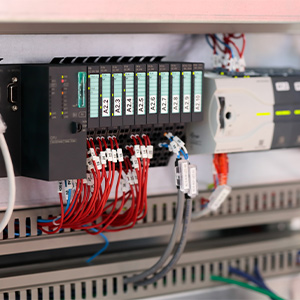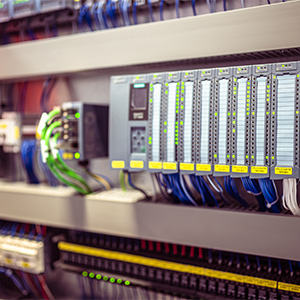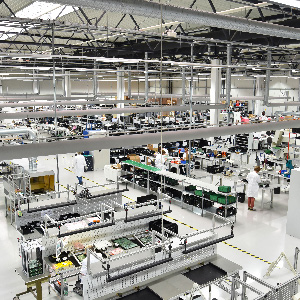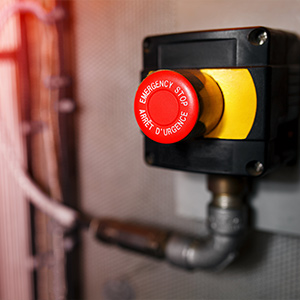The food and beverage industry has expanded rapidly in relation to the economic growth of many previously less involved countries. These include India, China, Vietnam and Brazil, where development and greater wealth has fuelled a demand for processed and pre-packaged foods, so more food production facilities are springing up all over the world.
Everything associated with the production of food and beverages must meet strict standards for cleanliness, including the enclosures used in automated processes. The global trade in raw foodstuffs, and the environments in which they are processed, all therefore require a special kind of enclosure, specifically known as a Hygienic Design enclosure.
What Are Enclosures?
Enclosures provide a protective environment to house sensitive electrical and electronic components such as switchgear and control devices. They usually consist of a cabinet constructed of metal or high-grade plastics. Enclosures for the food industry must be capable of withstanding specific types of intrusion, including grain and flour dust, bacteria and moulds, and atmospheric variants such as heat, cold and damp. They also need the ability to withstand frequent washing down with high-pressure sprays and chemical solutions. They're frequently made of stainless steel, and have particular features that discourage the build-up of residues or liquids. These include:
- Corrosion-resistant materials
- Watertight seals and seams
- A sloping roof
- Angled corners and chamfered edge folds
- No niches or gland openings
- No exterior locks or hinges
- A transparent viewing window
Corrosion-resistant materials are vital to enclosures that may be subject to frequent and intense cleaning procedures with detergents and disinfectants. Corrosion-resistant materials are primarily galvanised or stainless steel, which can be pre-grained, brushed, painted, plated with galvanised zinc, or have an electro-polished finish to help repel liquids. Aluminium and polycarbonate materials are also used in frequent wash-down environments.
Watertight seals and seams are essential to avoid penetration of any contaminants into the electrical or electronic circuitry, especially water or other liquids. Most Hygienic Design enclosures are fitted with a single-piece silicone exterior gasket, foamed in place around the frame between the body and the door. This highly efficient seal usually has moulded corners, is removable for easy cleaning and replacement, and is generally coloured blue for identification purposes and to distinguish it from foodstuffs.
A forward-sloping roof is convenient both for draining liquids off rapidly and preventing them from puddling on the surface. It also prevents other objects from being placed on top of the enclosure. An overhang on the roof prevents any ingress of liquids or solids into the door aperture.
Angled corners and chamfered edge folds make for significantly easier cleaning and wash-down.
Niches can allow contaminants to collect and build up residues, while gland openings and pre-screwed mounting holes can also invite the ingress of water and other contaminants.
Locks and hinges are mounted inside the seal of the enclosure cabinet, making the exterior easier to clean. Spanner locks and locking rods are common ways to close the cabinet door, but swing-handle locks can also be found.
A transparent viewing window, constructed of polycarbonate, allows instruments inside the enclosure to be observed even when external conditions are wet or dusty.
Standards
The design of enclosures for the food industry must take account of strict hygiene standards, and ensure that these can be maintained throughout the life of the product. The industry in Europe and Britain (for the time being) is governed by stringent hygiene regulations contained in several EU directives, which are necessary to protect public health. Non-compliance with these regulations can be costly, with companies having to recall contaminated products, upgrade or replace equipment, and potentially suffering a consequent loss of reputation.
The International Electrotechnical Commission also publishes a set of Ingress Protection (IP) Ratings for enclosures of all types, which are sometimes applied to food-grade enclosures. In the United States, a separate set of standards apply to enclosures, drawn up and named after the National Electrical Manufacturer Association (NEMA).
The following European standards and directives apply specifically to food preparation applications and equipment.
EN 1672-2:2005
This standard governs the general design principles of food processing machinery, with Part 2 applying specifically to their hygiene and cleanability requirements. It covers both the machinery itself and all machine components, and relates to food preparation and processing for both humans and animals, where relevant. These hygiene standards are aimed at eliminating, or reducing to an acceptable level, the risk of illness or injury. This standard supersedes EN ISO 14-159:2004, which was withdrawn in 2008.
BS EN 16001:2009
BS EN 16001:2009 is a British energy management standard intended to improve energy efficiency in machine processes. This standard was supplemented in 2011 by ISO 50001, which governs energy management systems (EnMS). The more comprehensive ISO 50001 was updated in 2018 to take account of greater climate change activity, and an increased emphasis on energy-saving and awareness.
EU Directive 2006/42/EC
EU Directive 2006/42/EC is a general directive regarding health and safety of all machinery. Its uses and its provisions are binding on all companies using such machinery.
EHEDG Guidelines
EHEDG Guidelines are a collection of useful hygienic design rules that can be applied to food production environments, food processing buildings and many types of food processing equipment.
There are also various EU regulations governing different aspects of food preparation, including:
- EC 852/2004 on general hygiene of foodstuffs
- EC 853/2004 relating specifically to foodstuffs of animal origin
- EU 2017/625 superseding EC 854/2004 and relating specifically to food products for non-human consumption (i.e. animals, plants)
- EC 1935/2004 relating to any other materials intended for contact with food
These standards are immensely detailed, to ensure that food production facilities are designed for the easiest possible cleaning, and to enforce the highest possible levels of hygiene in foodstuffs for human consumption.
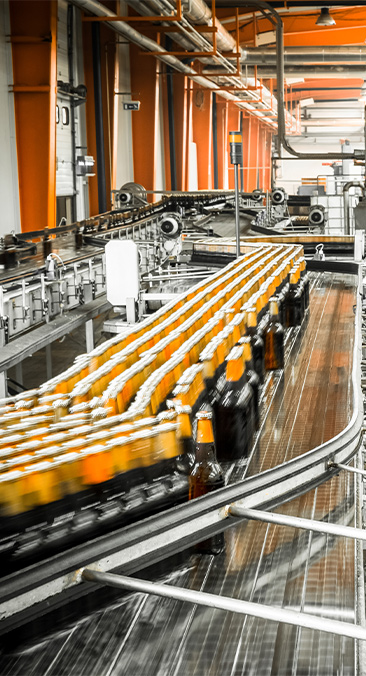
Food & Beverage Industry Production Facilities
In the food and beverage industry, there is a wide range of food preparation environments, including:
- Breweries
- Wineries
- Distilleries
- Dairies
- Bakeries
- Sugar refineries
- Flour mills
- Animal processing factories
- Freezing plants
These all require their own specific types of enclosure. Modern manufacturers are supplying modular designs which offer a range of options, including high-speed controls, ATEX resilience, climate control and HMI accessories. The modular designs are eminently scalable and can be customised to each specific environment. In general terms, a food preparation factory will require high, medium and low levels of hygienic protection. This governs the selection of the appropriate type of enclosure.
High Level
In the food preparation area itself, or product contact zone, the hygiene standards are most critical. The highest risk of contamination occurs here, where foodstuffs come into contact with people and machinery, so it's vital that all enclosures within this zone are of the most stringent hygienic design. They might need to be dustproof in a bakery, or especially resistant to low temperatures in a freezing plant.
Medium Level
The medium risk level is in the spray or splash zone, where the foodstuffs are already processed and generally protected from the external environment. This occurs during packaging or secondary sterilisation treatment, when the food products are not returned to the high-risk contact zone. Dairies, for example, might be carrying milk to cartons in a pipe system, while other beverages are on their way to bottles or cans.
Low Level
Low-risk areas for food factories include basic hygiene zones such as offices, warehousing or IT server rooms, which are generally designated as non-food or product-free zones. While such enclosures are still technically within the food and beverage industry, they're located in spaces that aren't required to comply with hygienic design rules. Enclosures for these zones can therefore be chosen for more specific purposes such as climate control, printer housings and control panels.
Enclosures For The Food Industry
Hygienic Design enclosures for the food industry can be customised with various additional options, such as latches or padlocks, cut-outs, levelling feet and viewing windows. Types of enclosure include floor or wall-mounted versions, with optional mounting plate; or integrated mounting flanges which allow the cabinet to be fixed onto walls, struts or brackets. Some food-grade enclosures are free-standing, and a variety of enclosures are produced specifically for terminals, junction boxes, IT arrays and HMI consoles. Accessories can be provided to customise a unit to specification, such as Hygienic Design compatible cable glands or wall spacer brackets.
Hygiene in food production facilities is vital to keeping factories running and in compliance with regulations. Increasingly stringent rules are being introduced in some areas, such as the Food Safety Modernisation Act (FSMA) in the USA. Cleaning and compliance with standards might therefore become even more of an issue than it is already.
Since many manufacturers regard cleaning and sanitation time as production downtime, the cleaning and disinfecting process will need to be speeded up to maintain and increase efficiency. The response to stricter regulation is also likely to involve more caustic cleaning products, operated at a higher heat, and using a higher velocity or pressure spray. The end result is that enclosures for the food industry must evolve to accommodate these developments, while still being able to function in the most cost-effective manner.

